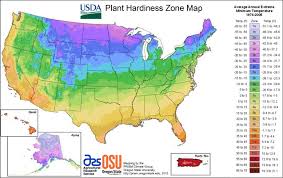What to Plant When
go.ncsu.edu/readext?761187
en Español / em Português
El inglés es el idioma de control de esta página. En la medida en que haya algún conflicto entre la traducción al inglés y la traducción, el inglés prevalece.
Al hacer clic en el enlace de traducción se activa un servicio de traducción gratuito para convertir la página al español. Al igual que con cualquier traducción por Internet, la conversión no es sensible al contexto y puede que no traduzca el texto en su significado original. NC State Extension no garantiza la exactitud del texto traducido. Por favor, tenga en cuenta que algunas aplicaciones y/o servicios pueden no funcionar como se espera cuando se traducen.
Português
Inglês é o idioma de controle desta página. Na medida que haja algum conflito entre o texto original em Inglês e a tradução, o Inglês prevalece.
Ao clicar no link de tradução, um serviço gratuito de tradução será ativado para converter a página para o Português. Como em qualquer tradução pela internet, a conversão não é sensivel ao contexto e pode não ocorrer a tradução para o significado orginal. O serviço de Extensão da Carolina do Norte (NC State Extension) não garante a exatidão do texto traduzido. Por favor, observe que algumas funções ou serviços podem não funcionar como esperado após a tradução.
English
English is the controlling language of this page. To the extent there is any conflict between the English text and the translation, English controls.
Clicking on the translation link activates a free translation service to convert the page to Spanish. As with any Internet translation, the conversion is not context-sensitive and may not translate the text to its original meaning. NC State Extension does not guarantee the accuracy of the translated text. Please note that some applications and/or services may not function as expected when translated.
Collapse ▲By: Aimee Jarrels, Extension Master Gardener℠ Volunteer in Pender County
A lot of people want to get into gardening. While some are naturally gifted gardeners, there are those who, after not succeeding on the first try, get discouraged easily and make the excuse that they simply are not green-thumbed. However, some of the reasons we fail are not rocket science. There are many different levels of growing experience. Maybe the plants we choose are not growing at the best time of the year. It is essential to know when to start growing which plants to obtain the optimal result.
Know your location. Where you are located is essential. Different states experience a different drop in temperature, which is crucial in planting. Most plants cannot endure the freezing weather during wintertime. We belong to zone 8A where freezing is less common than other areas, which means a much different variety of annual plants that can be planted.
Know which plants to plant. Knowing when annual plants grow best gives them a higher chance of surviving and higher productivity. Each plant is unique and has different adaptability. The plant’s hardiness should be considered since some plants are not equipped to withstand harsh weather and sudden shift in temperature.
Planting Calendars can help address these problems. Planting Calendars are useful guides in determining when to start growing the seeds of varieties of plants and when to transfer them. It basically guides gardeners on each plant’s time frame of the best time to plant until its harvest.
Learn More:
Garden Calendar Activities in Your Lawn, Landscape, and Garden All Year Long




